Warwood Tool
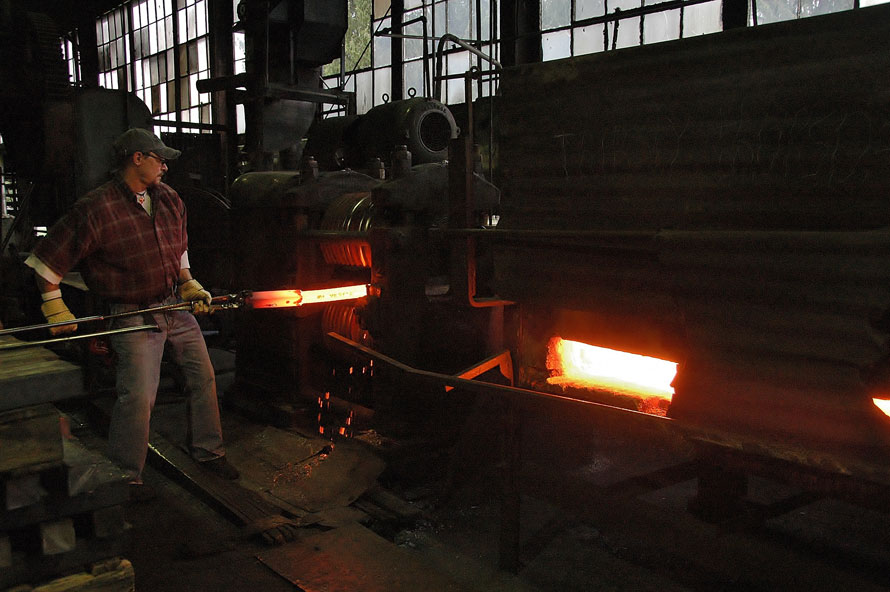
Warwood Tool is hard to find—heck, the first time that you came here a friendly lady at the local bakery had to give you directions to it. Built in 1905, way before the residential homes that now hide it, the shop building is long, low and gray, bound by the Ohio River and a rail trail. Warwood Tool is a maker of forged hand tools for the railroads, the mining industry and just about anyone else who uses their hands for their livelihood. The company was founded in 1854 over across the river in Martins Ferry, Ohio as a maker of agricultural tools, but Mr. Warwood brought his shop over to the West Virginia side and changed his focus with great success. Of course, times have changed. Competition from the US and abroad has cut into sales, making the last few years a struggle to survive, but a management change in 2020 has brought new life to the plant. The big hammer “Thumper” runs most every day and tools are still being painted a nice dark blue before going out the door.
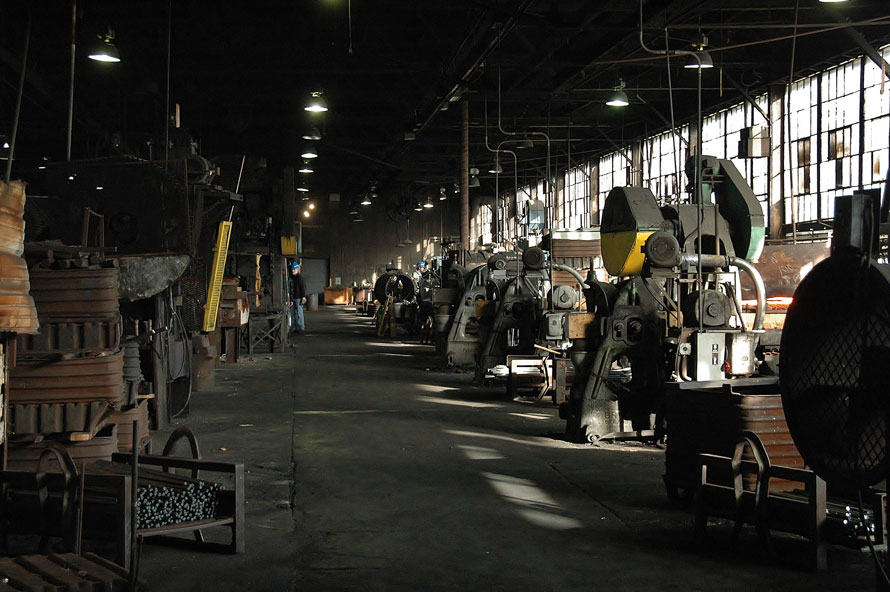
Entering the main door, you come right into the simple offices, with framed copies of currencies from around the world hanging on the wall-showing the reach that Warwood has around the globe. It’s amazing to see that they sell in China, about the last place you’d expect. Come through another door and you are in the shipping/tool warehouse. There’s just about every striking tool that you’d ever want to see here, some familiar and some that have you shaking your head thinking, “What in God’s name is that used for?” If you’re flummoxed you can just ask Cliff Thorngate, the plant manager. He’s been here since 1974 and knows what each of these tools are used for, how they are formed, heat treated, finish ground and in which bin they belong. With a twinkle in his eye, he’ll show you a mason’s hammer and tell you the weight and ultimate use for it. Most of the production here ends up on railroad lines in the US and Canada (there’s three pages of track tools in their current catalog!). Remarking on the design of a spike puller (a big volume item) you are told, “See where the top hand hold is? Notice how high it is? It’s just past the point where the railhead is, so that when the spike comes loose, you don’t smash your knuckles on the rail.” Ingenious to say the least.
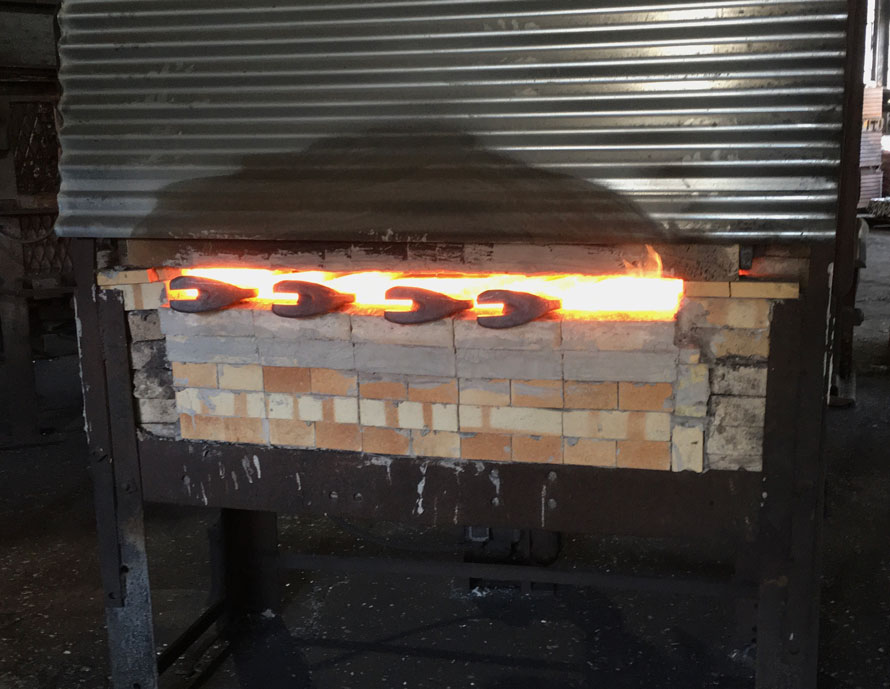
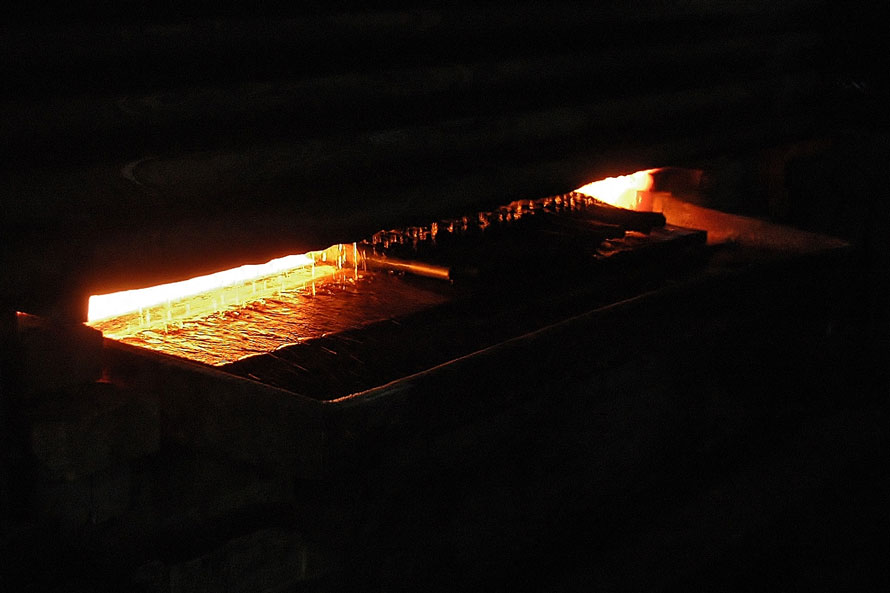
One more door takes you into the shop and the first thing you’ll encounter is a little brick furnace full of spike maul heads. The crazy thing is that the heads are in the flame and the centers of the tool are being doused with water! Upon asking about this you are told that only the head needs to be hardened (where they hit the spike) while the rest of the tool needs to be malleable to withstand the shock of driving that spike. Walking along past a couple of old looking furnaces, you remark that, “I don’t think that Jesus built these, but I’ll bet that the apostles hand a hand in them.” To which Cliff, with a grin, says, “And we baptized them over in the Ohio.” In fact, the maintenance manager, Russell, is building a new furnace since they simply cannot buy this type of furnace anymore. The whole shop seems to be of World War II vintage and that’s just fine with everyone—it all works well, and it can be all maintained in house. Back then the equipment was built to last.
This must’ve been quite the place back in the day—all the furnaces firing, the hammers making noise, the grinders throwing sparks . . .
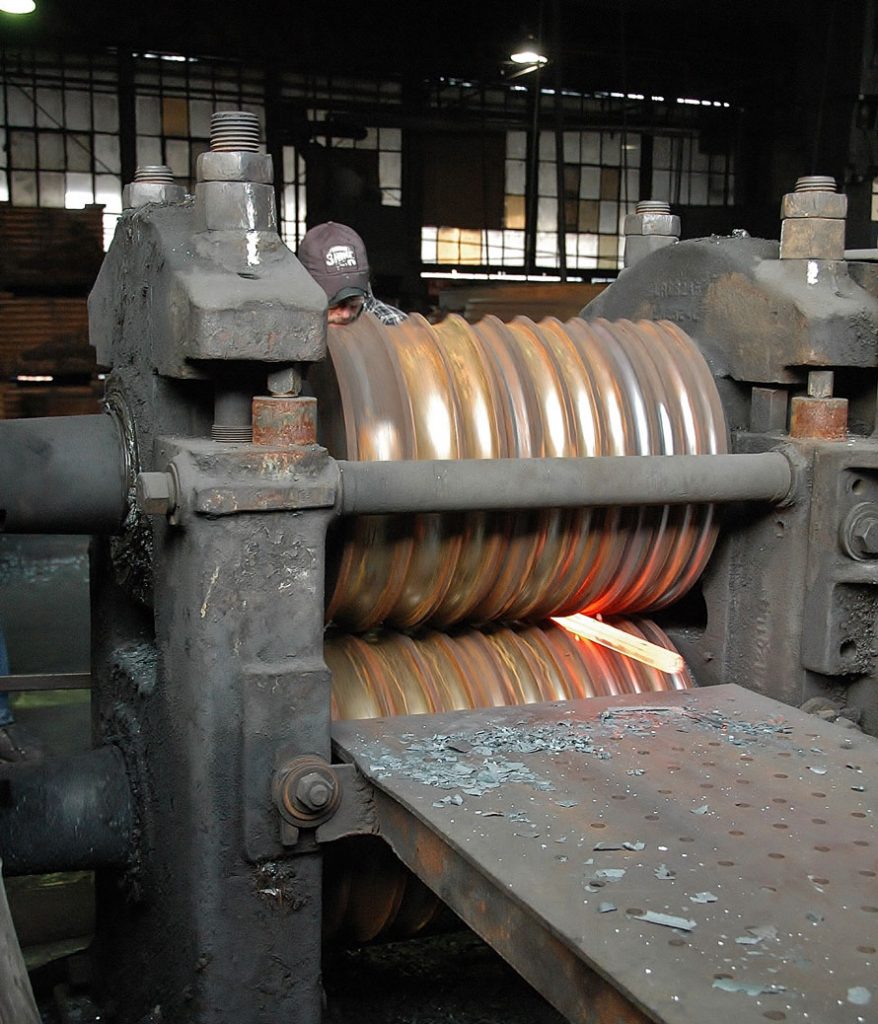
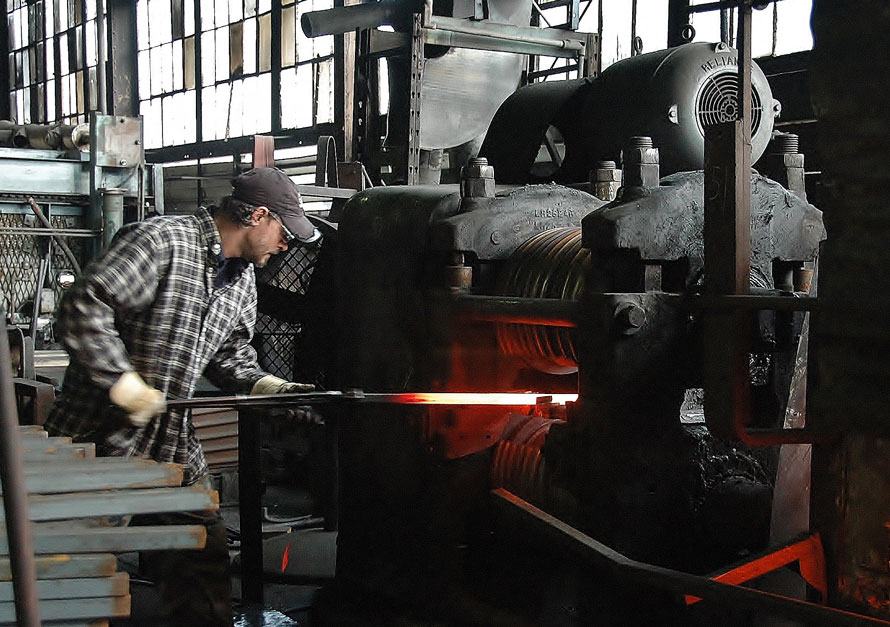
Those spike pullers that we saw before are made from steel bars rolled down in a machine consisting of a pair of grooved half rolls called the No.2 roll forge. It is something to see, the rolls spin slowly and the bar is inserted between the rolls when they open up with the smith choosing the individual groove to slowly draw the bar out to finished size—in about 6 passes the tool handle in drawn out. This takes skill, concentration, and plain old muscle. And this is only part of the job; they still need to be stamped with the Warwood logo, have the hand hold notch formed and the head (for pulling the spike itself) formed and upset.
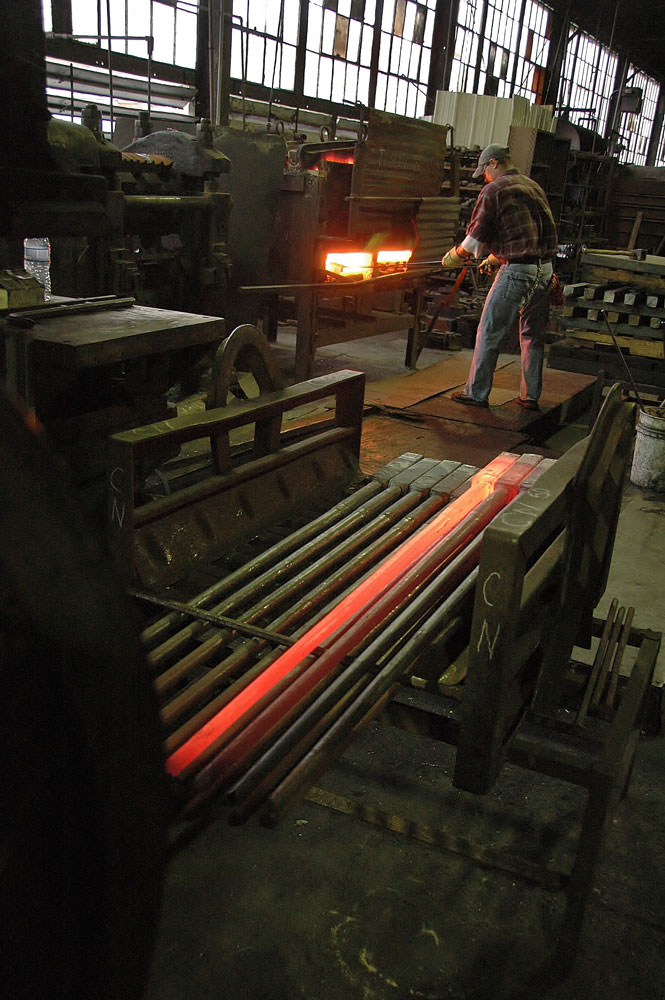
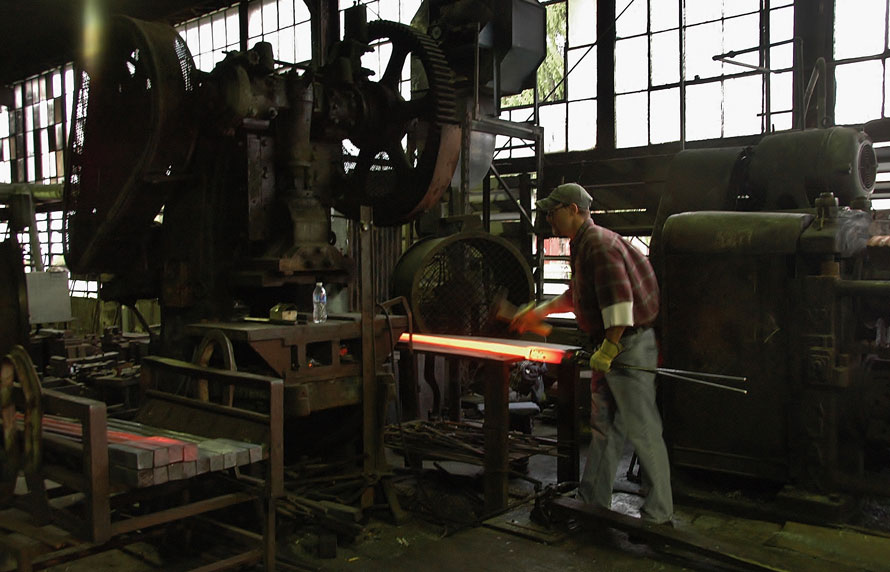
Oh, there are many other hammers, furnaces and trim presses in evidence as you wander through the shop, each set up to make some specific tool, but the most fascinating machine may be the “Bradley” press. Last made in the 40’s, it consists of a big pair of pincers (like a giant crab claw) driven by a motor/flywheel/crank arm combo and just hammers on bars like mad. Again, the speed of the action requires skill and concentration. This day they were making big pinch point crow bars no doubt headed for a construction site somewhere.
The final part of the shop is raw material storage, racks and racks of bars and billets sadly mostly empty now since the volume of business is much reduced. Cliff tells you that back in the 70’s when 120 men toiled in the shop that the steel was piled to the rafters, “I used to climb on the steel to change the lights back here!” It’s still an impressive sight.
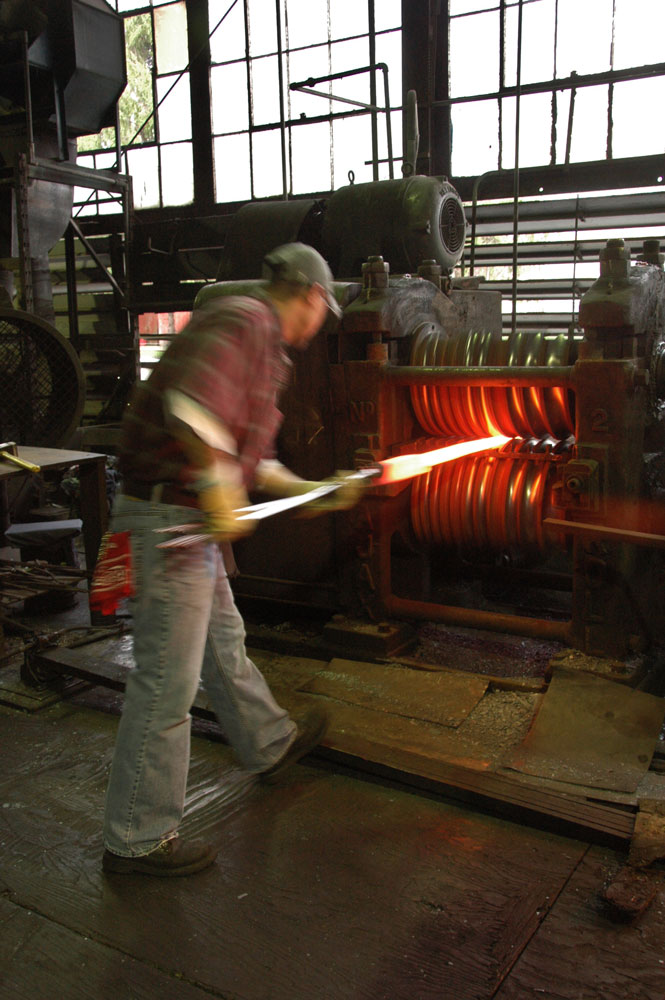
As you turn and walk back through the main aisle in the shop and towards the main office it occurs to you that this must’ve been quite the place back in the day—all the furnaces firing, the hammers making noise, the grinders throwing sparks and bins of tools on the floor, but you know what? It still is quite the place—a living and breathing forge shop making tools that go all over the world.
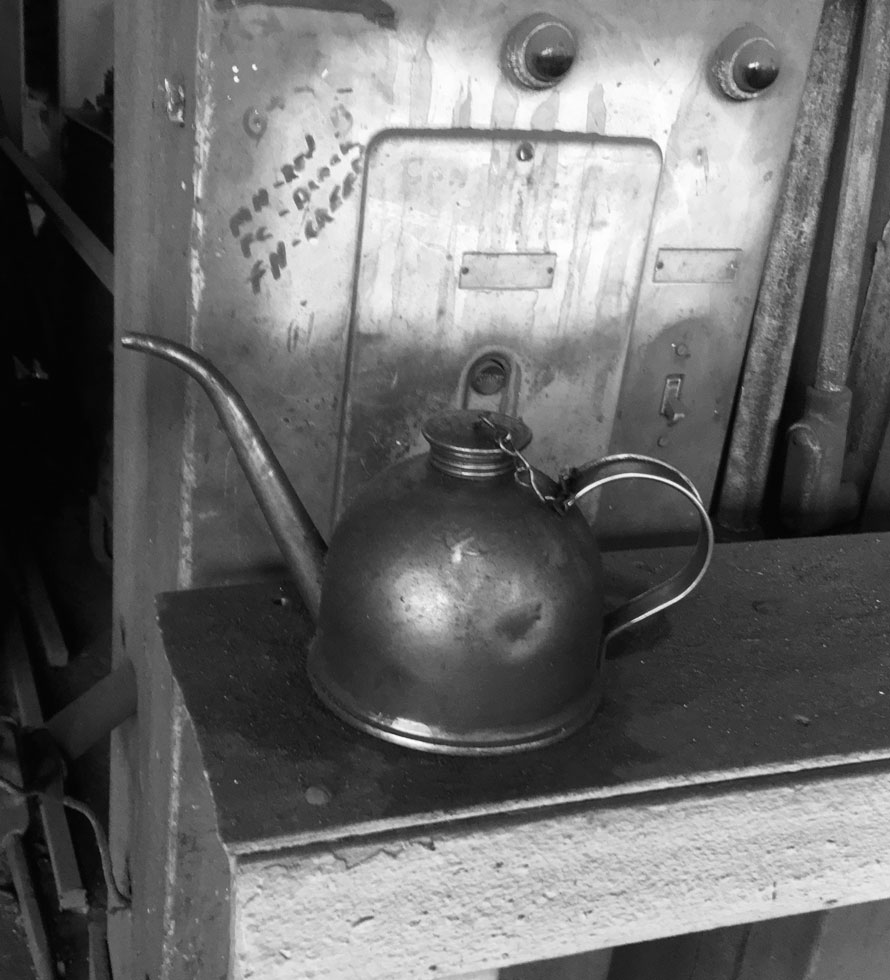
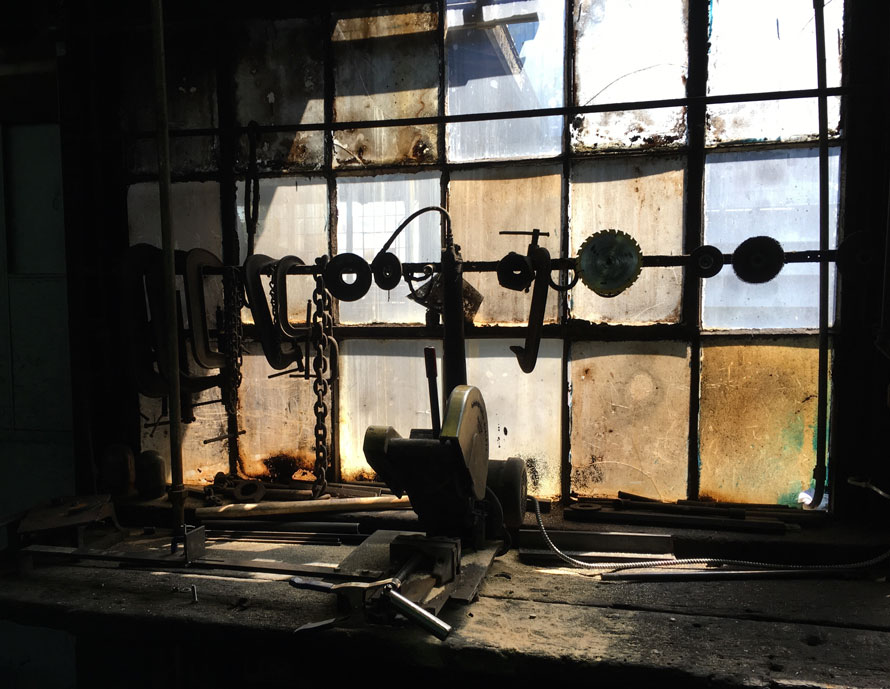
Kevin N. Tomasic – Photographs and text Copyright 2021
Kevin, this is outstanding. What an incredible story to read! As always, this demonstrates more of what has disappeared in the United States Industrial economy: not just the companies that built the machines, but the people with the knowledge and understanding, having the capability to do so. A visit to the machine shop in the Sierra roundhouse in Jamestown, California, is equally such a story.
What a great story and very interesting to boot! Pictures completed the story. Not too many places left in the US anymore like this shop. One question, do ship by rail? Receive raw materials by rail?
James and Dave–thanks for the kind comments. Warwood is a special place and the folks there treat me very well. All products come in and out via truck unfortunately. The old B&O line that was next to the plant is a walking trail.
Kevin, another outstanding story and fine photography. No one else is exploring the supporting industries of railroads with the depth and knowledge you have. Thank you for sharing this.
What a great story! As well as your pictures! As someone who has spent his life around the railroad and saw some of these tools I can appreciate it more. I have what I think was referred to as a pinch bar. It is not a spike puller but comes to a point. I must look at it to see if the company mark is on it. One question, does this company also do the rubber coating that many of those tools have on them I believe they are dipped in a vat for this.
John, no they do not coat them with anything but a deep blue paint.
I heard years ago the railroad put the coating I’m talking about on our brake handles in the engine so perhaps that’s who does it for the track department
Here is a place I would love to visit. How some work cannot be improved upon when doing the work of real men.
Warwood Tool has a Youtube channel with a few videos of their manufacturing process. When we were working across the river at Wheeling Pittsburgh Steel I found quite a few Warwood pry bars and still use those bars to this day.
The second to last photo of the oil can is interesting as that can probably came from Eagle Manufacturing in Wellsburg, just up the river a few miles. Eagle is still in business too.
Great work!
Thanks for the awesome write up. All of us here at Warwood Tool are back on-track! Some new people, new updated machines and sales are growing everyday! Our updated catalog will be posted on our new website in a few days.
Drop Forged in the USA with American made steel